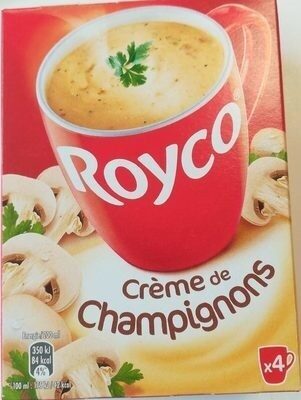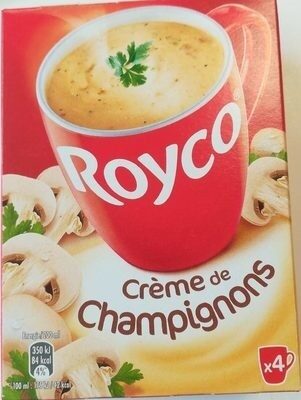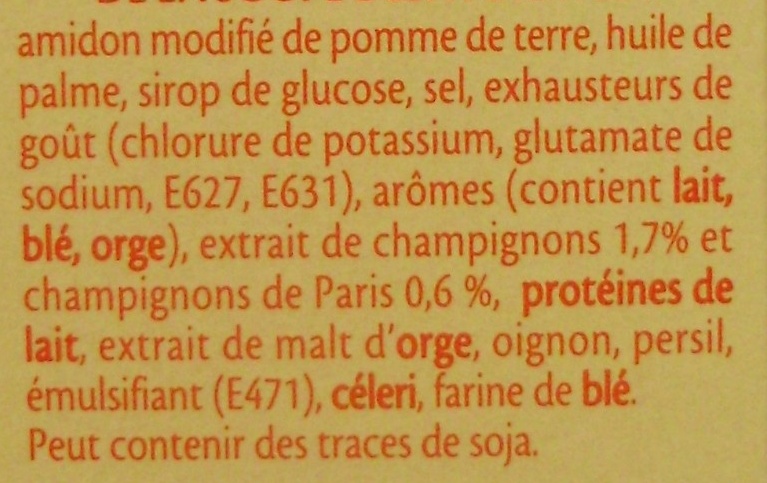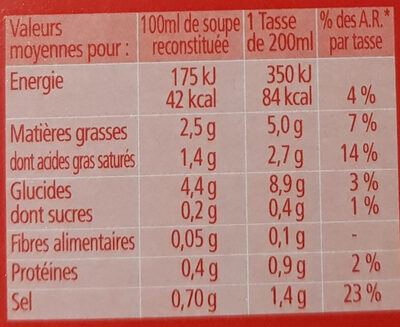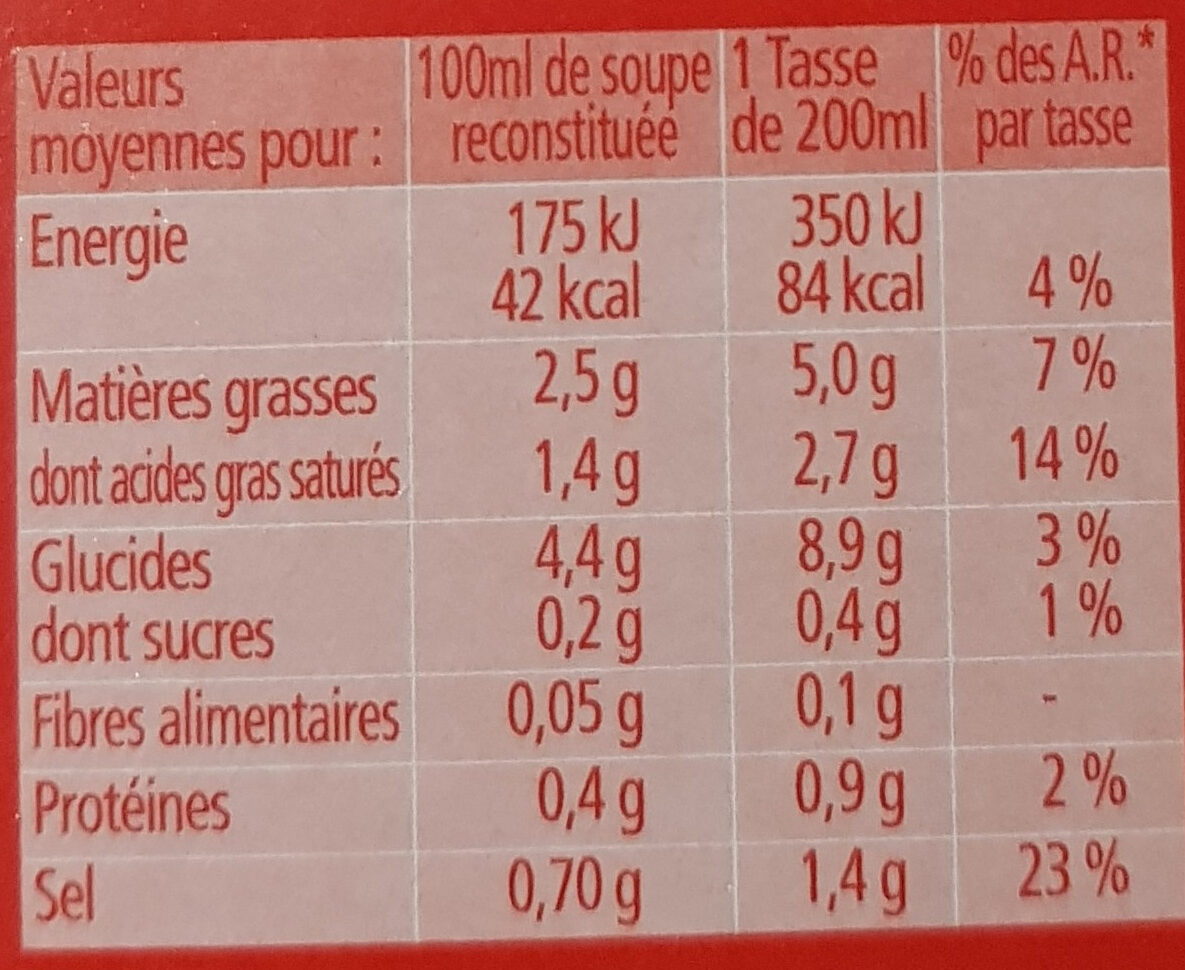Crème de Champignons - Royco - 64,0 g (pour 4 sachets), 80 cl reconstitué (4 x 20 cl)
This product page is not complete. You can help to complete it by editing it and adding more data from the photos we have, or by taking more photos using the app for Android or iPhone/iPad. Thank you!
×
Barcode: 3036812020681 (EAN / EAN-13)
Common name: Crème de champignons déshydratée
Quantity: 64,0 g (pour 4 sachets), 80 cl reconstitué (4 x 20 cl)
Packaging: Bag, fr:Boîte carton à recycler, fr:Sachets à jeter
Brands: Royco, Continental Foods, CVC Capital Partners
Categories: Meals, Dried products, Dried products to be rehydrated, Soups, Dried meals, Dehydrated soups
Labels, certifications, awards:
No colorings, Triman, fr:Info-tri-point-vert
Link to the product page on the official site of the producer: http://www.royco.fr/la-gamme-royco/les-c...
Stores: Leclerc, Magasins U, carrefour.fr
Countries where sold: France
Matching with your preferences
Environment
Packaging
Transportation
Threatened species
Report a problem
Data sources
Product added on by lalorelei
Last edit of product page on by foodvisor.
Product page also edited by cguy, charlesnepote, date-limite-app, driveoff, ecoscore-impact-estimator, fe84, gabrielbe, jacob80, kellymanu, kiliweb, magasins-u, manu1400, nash, off.434f98a7-0d46-4e70-b450-bbbdd1353012, off.7747e448-a122-4641-9b13-eca1812aa6f2, openfoodfacts-contributors, packbot, pask, pth, roboto-app, sasha, yuka.RzZzSkRLb3NyT2NxaXN3WDRCek1wODkyK2I2bVgzMjJGTlkrSUE9PQ, yuka.UzQ4NEM2a1FyUHMyd3NjWDJrM05wdGRSMVo2YlpXUHJjckVXSVE9PQ, yuka.UzRZREY2Y3JwZFlHdk1JNDFCem4rdmh4N3MrRWJFSHRKODFJSUE9PQ, yuka.V2FVWURQd2pvZlV1b01RNzd4aUp5dFpVMTRMMUIwT3dDTXNTSWc9PQ, yuka.VEw4QVBxNG1sUHNVeXNFWTVoall3ZTlFbnJtdVJWKzlLYlE4SVE9PQ, yuka.XJVJOPe5RsEvMfHR160t-AGxKMTcMuIGSCcHog, yuka.ZTYwTkg3VUJyTjhPeHZRUW9nM1p4czUxK1p5RVltT2xPL1FlSWc9PQ, yuka.sY2b0xO6T85zoF3NwEKvlk5JDsLxny6UNxHngHyM2tzfNKfEf-lgurTVaKs, yuka.sY2b0xO6T85zoF3NwEKvllZ5f8LSuTTLJhfSo3Oo69ffP8XaS9sizZTYNqg, yuka.sY2b0xO6T85zoF3NwEKvlmdJcPOBs2vBNyHgknGM9vajdKbvMYtp-pfUGKs.
